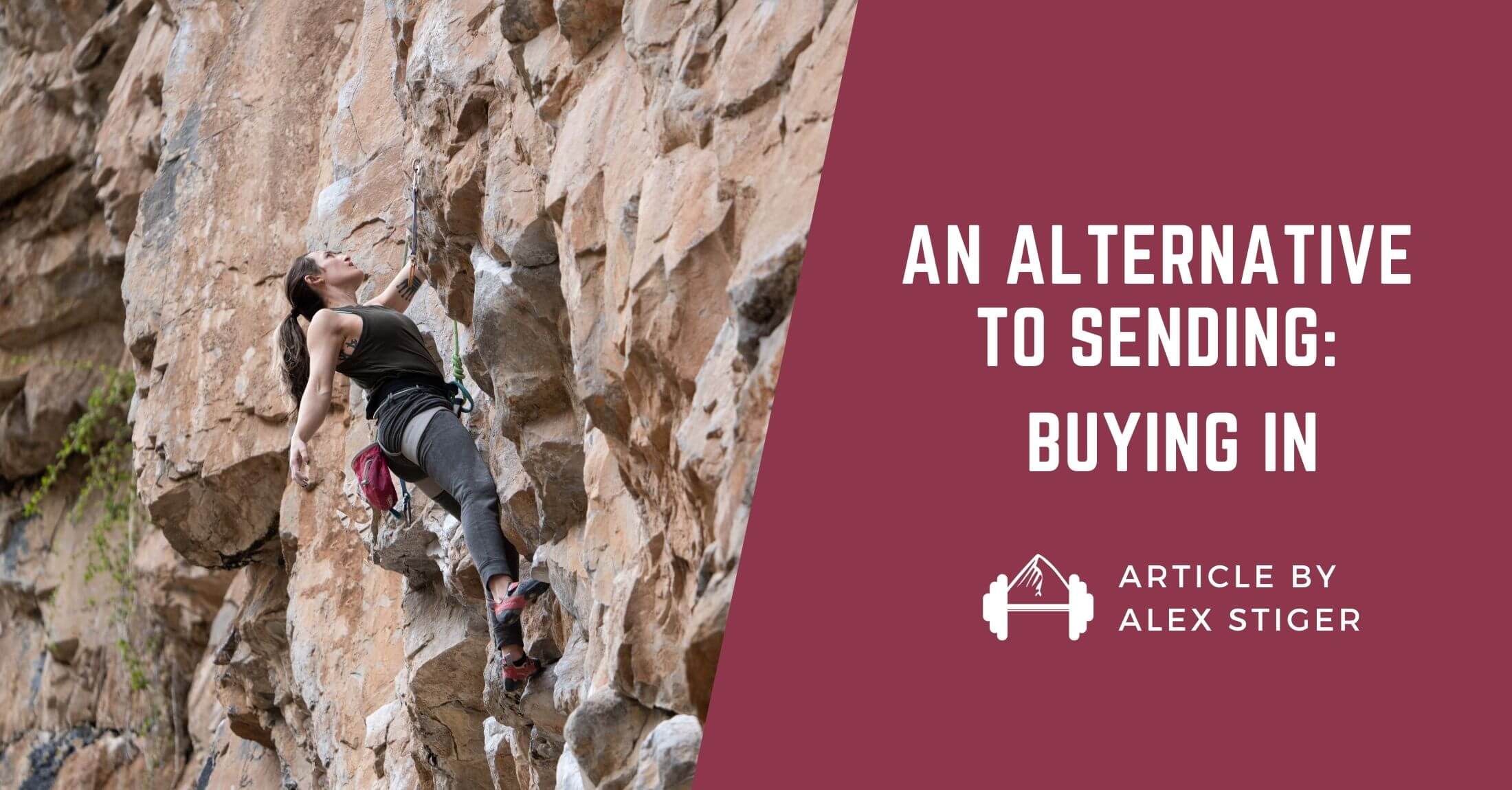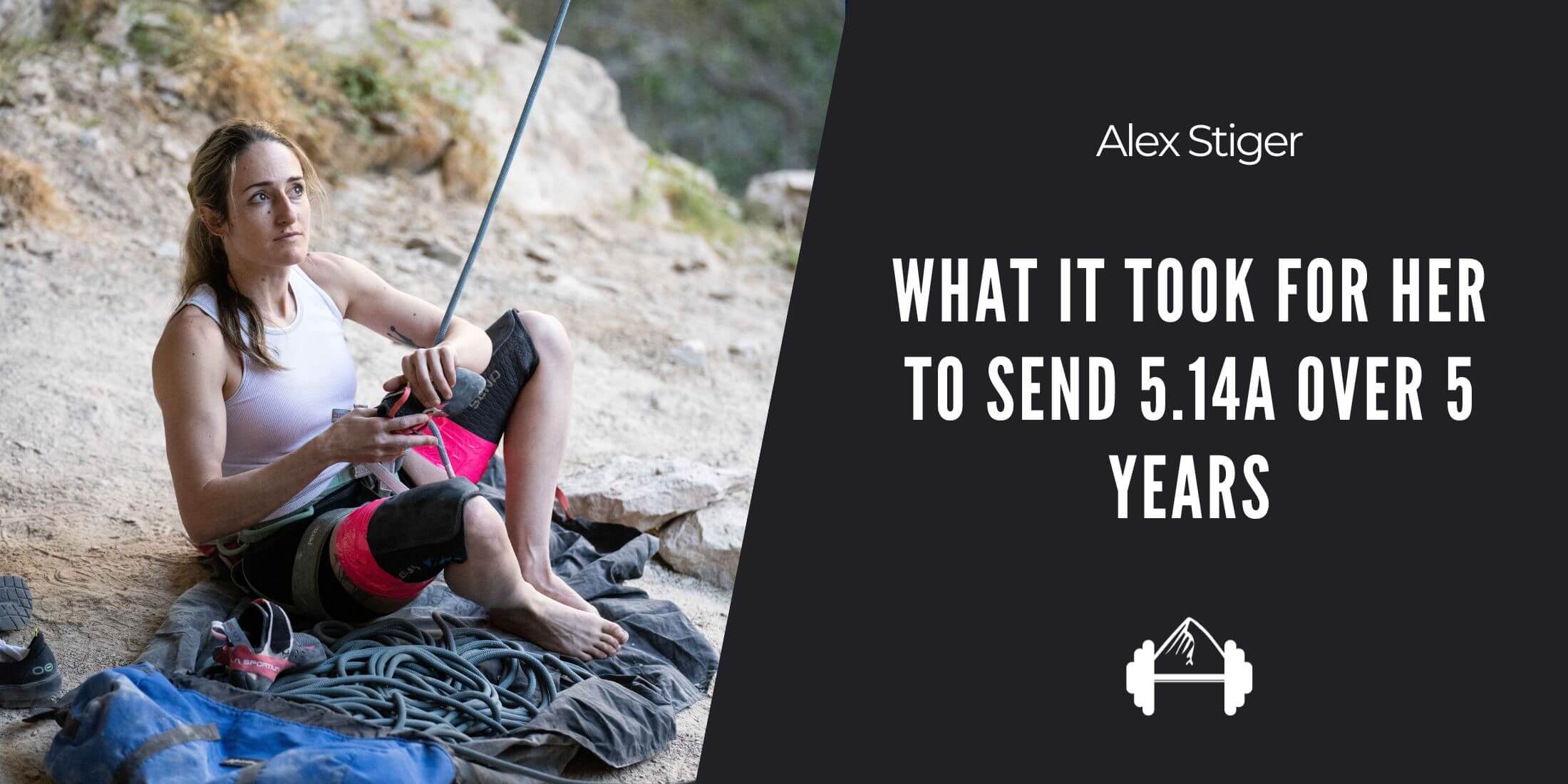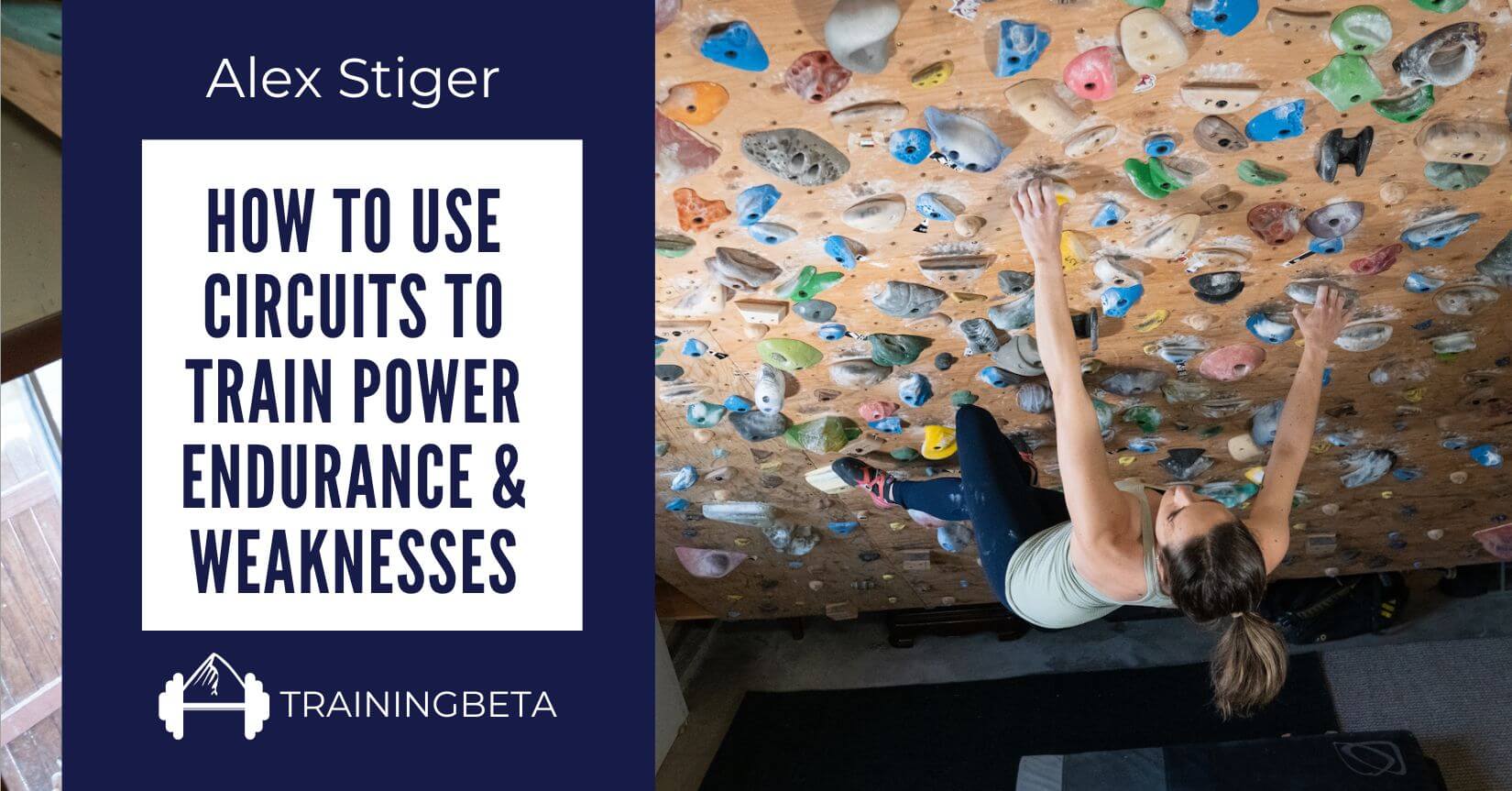Announcement!
Alex Stiger is teaching a live TRX Workshop for Climbers on Tuesday, December 7th at 6-7:30pm Mountain Time for just $25. In it, you’ll learn all about how to use the TRX properly and how to use it to get stronger for climbing.
If you sign up for the workshop before Friday the 3rd, you’ll also get a free guided TRX class with Alex on Tuesday the 14th!
The following article was written by Alex Stiger, a Certified Personal Trainer, Sports Performance Coach, and Coach at Movement Climbing + Fitness in Boulder, Colorado.
In the text below, Alex summarizes her experience pursuing a stronger core. Once she realized that endurance core workouts weren’t helping enhance her climbing performance, she started focusing on core workouts that help build strength and power. She then outlines three of her favorite ways to strengthen her core to become a stronger climber.
We hope you enjoy the following article and core workouts!
HIGH-INTENSITY CORE TRAINING
By Alex Stiger
“That move felt so big.”
“Why did I fall off? I’m not even pumped.”
“Why can’t I keep my feet on during that move?”
Have you said any of these things while climbing? Because I sure have… The pursuit of rock solid abdominals is not a new pursuit for climbers. However, it can be super confusing about which core exercises we should be doing that will help the most for our sport.
I am writing this article to help you understand what kind of training for your core will help you climb harder. Having a stronger core will help you feel that big moves aren’t quite so reachy, steep terrain isn’t quite so daunting, and that you can rely on your feet staying on the foot holds and not flying off during hard moves!
I used to be a core class connoisseur! 1-3x per week I would do a 30-minute core workout. After EVERY climbing session I would do at least 6-minutes of core. I even had a group of friends at the gym who would join me for “6-minute abs” every evening (1-min plank, 1-min row sit-ups, 1-min russian twists, 1-min leg lowers, 1-min flutter kicks, 1-min plank).

I took pride in my ability to accomplish core workouts. I really felt that if my core was stronger it would be my key to unlock harder climbs. Unfortunately, the massive amount of time I spent doing crunches never crossed over to the climbing wall like I was expecting (it didn’t cross over at all…).
Think of it like this…
Would you do 30 reps of 5 lbs. overhead dumbbell presses to prepare to press 50lbs or more for 3 total reps? Would you run fifteen miles at a slow jog to train for your fastest quarter mile? Let’s agree, that would not be effective training for those goals. Why then would doing 100 crunches help meet the specific demands of our sport?
We need to have a really strong core that can hold a lot of tension and we need that same system to occasionally respond really quick and powerfully to aid us during an explosive move or to get our feet back on the wall when they come off.
To summarize my past core training endeavors, I was doing a crazy amount of core every week and was not improving as a climber. Every big move felt impossible, if my feet cut and I managed to get them back on, it would leave me exhausted and falling off soon after. And my feet cut a LOT! No matter how hard I tried, I couldn’t keep my feet on the wall during hard moves.
One snowy day in the gym I joined my friend for a core workout on the TRX suspension system. We took turns doing 1-min on, 1-min off for 12 minutes total. Oh my goodness, it was one of the hardest core workouts I had ever done!
The next day I couldn’t even laugh without wanting to hold my tender belly still. Thankfully, after completing that workout a couple times over the course of a week that initial post workout soreness went away.
More importantly, it wasn’t long until I started feeling huge changes in my climbing. I thought the setters at the gym started being kind to small people (they hadn’t), I stopped cutting feet all the time, and I started accomplishing harder grades on boulders and routes! I also had a lot more time to spend on other forms of training as I cut my previous time spent on core to a quarter of what it had been.
What does this story mean to you?
It means you should try adding in core workouts that focus on strength and power and not just endurance.

Lower intensity, longer duration core workouts, like what I was doing a ton of during my multi-year climbing plateau, are a fantastic form of exercise and have proven to be effective for helping reduce chronic lower back pain. Those kinds of workouts are not bad for you and they definitely have a purpose. The big question for us climbers is, will 30 minutes in a row doing these kinds of exercises help our climbing? My personal experience and from what I see with clients is that the answer is a definite no.
If you are wanting to strengthen your core to help you be a stronger climber we have to train those muscles differently than if we want a healthy, supportive core for our non-sport activities. Doing the same exercises over and over at the same intensity does not result in continual adaptations of the muscles we want to strengthen.
Are you sold yet on the idea of hard but short core workouts? I hope so, and please continue reading for my three favorite ways to strengthen my core for climbing:
1) TRX
Different exercise durations depending on fitness level, but max 6-9 minutes of work in a session. The TRX adds that intensity because it is a suspension trainer. By having your feet in the cradles and needing to stabilize your body, it really elevates the intensity of a plank! Sound confusing? Please follow along with me during one of my normal TRX workouts:
- 40 seconds on; 20 off (to modify do 30 seconds on, 30 seconds off for easier and 50 on, 50 off for harder) X6
- Plank, Tucks, Mountain Climbers, Double Knee Crunches, Saws, Plank to finish.
** There are definitely high-intensity floor core exercises as well. Such as proper planks, hollow body holds, weighted sit-ups etc… Those kinds of exercises are an option but I find the TRX to be super effective because any core work done on a suspension system is going to add lots of intensity.
2) On-The-Wall Drills
- Pick 3 boulders you have already completed and every 2 moves intentionally cut your feet and return them to your foot holds. Make this exercise harder by increasing the difficulty of the moves you are on or returning to worse feet– not by doing lots more!
- Pick a good enough hold in a steep overhang and start by hanging on your chosen hold with your feet dangling. Pick 3-6 foot holds to touch and press into on each side for each leg before resting. Complete drill 2-3x.
3) Full-Body Strength Exercises
Such as Deadlifts, Pull-ups (ideally weighted and with a very engaged core), ring workouts etc…
** Keep in mind you are training more things than just your core so you have to time these in your program accordingly.
Important to note: EVERY climber will benefit from a stronger core. Yes, taller individuals might need to hold more body tension when spread out. However, smaller individuals need to rely on the core to reach those far away holds! When I come down from a route and say, “that felt reachy,” I instantly know I am due for some short sessions of high-intensity core work.

About the Author






Leave A Comment